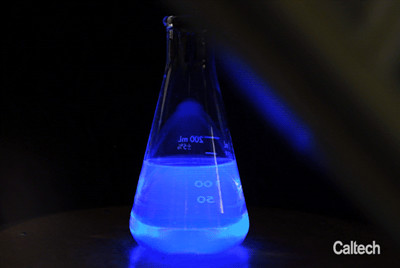
Caltech scientists have developed a new kind of polymer that can carry a chemical payload as part of its molecular structure and release it in response to mechanical stress. The chemical system they have developed could one day be used to create medical implants that can release drugs into the body when triggered by something like ultrasound waves, they say.
In a new paper published in the September 13 issue of the Journal of the American Chemical Society, Assistant Professor of Chemistry Maxwell Robb and researchers in his lab describe the polymer they have developed and the reaction that makes the payload system possible.
The new material consists of a set of polymer chains bonded to the payload system, creating a mechanically sensitive unit called a mechanophore. A so-called cascade reaction ejects the payload from the polymer. In simple terms, force applied to the polymer causes weak bonds in the mechanophore to rupture, spitting out an unstable intermediate molecule that promptly breaks down to release the attached payload.
In their paper, the authors demonstrate the release of a coumarin dye, an organic molecule with useful properties, but they say the polymer could be tailored to release a variety of molecules, including those with therapeutic qualities.
A material that can release drugs on command could be used to provide more precise treatment of some medical conditions; for example, a cancer therapy could deliver a drug directly to the intended target.
"The generality of this new platform is unique in that it allows, in principle, the mechanically triggered release of a wide range of cargo molecules," Robb says.
The system Robb and his colleagues have developed could also be tweaked for other purposes. He says that it is possible to create a polymer that depolymerizes—or completely breaks down into small molecules—when subjected to stress. Alternatively, a polymer could be tailored to release a reporter molecule to signal locations in a structure that are under stress and could lead to a structural failure.
"We are actively working on expanding the design in a number of directions, to evaluate the scope of cargo release and for triggered depolymerization, which is particularly promising for stress amplification since it allows a single triggering event to generate many small molecules through a domino reaction," Robb says.
The paper is titled "Mechanically Triggered Small Molecule Release from a Masked Furfuryl Carbonate."

